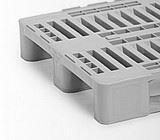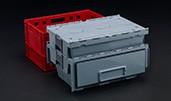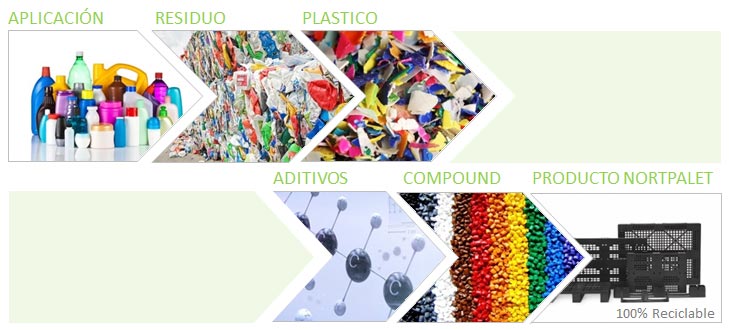Therefore, adding the value of sustainability in packaging becomes a priority both for the packaging industry and for E + E manufacturers, without forgetting the consumer himself, who increasingly demands this type of sustainable solutions.
Companies see the need to address the implementation of a new production model based on the circular economy, where the materials used for the manufacture of containers and packaging promote the acceleration of circularity for greater sustainability. But why is it so important and why does the plastic pallet become a fundamental piece in this type of packaging?
There are different fairs, events, and meetings such as the one Alimarket that is held every year and where some keys are revealed on how to define sustainability within the Packaging Industry.
Sustainable Packaging Solutions
Leading companies in sectors such as beverages and food, have begun to promote the transition towards a circular and sustainable economy by implementing the use of sustainable packaging.
Applying a circular economy system when manufacturing packaging is one of the fundamental principles and values that Naeco, previously Nortpalet follows when designing its pallets, to avoid the creation of polluting waste. Accelerating circularity therefore offers the following advantages:
• Increases their reuse, facilitating their recycling at the end of their useful life.
• The plastic material of the pallet becomes raw material at the end of its useful life.
• It does not become polluting waste.
• They are lighter pallets, which reduces CO2 emissions during transport and throughout the entire logistics circuit.
• They have a greater durability
Without a doubt, packaging design is one of the main concerns that companies have. The globalization of the market, products that travel long distances, and a differentiating image in addition to the growing concern for respect for the environment and sustainability, have made packaging one of the most recurrent topics of debate. But what exactly does it consist of and why is concern about responsible use and consumption growing, not only by industries, but also by consumers? If you want to know all the answers, take good note of the information keys that the Naeco, (previously Nortpalet) team gives you below!
What is packaging? logistics applications
Packaging refers to the technological tool that enables consumer goods to be protected, preserved, and maintained in good condition during the transport, handling, storage, distribution phase and during sale. Its fundamental objective, therefore, is based on facilitating these processes effectively and efficiently throughout the logistics chain.
However, packaging increasingly needs to be sustainable as well as efficient, and plastic is an effective material in these industrial processes and when it comes to storing and transporting merchandise safely. One of these essential logistics solutions are plastic pallets, also called tertiary packaging, designed to prevent the deterioration of the products between the factory and the final consumer. Therefore, it can be concluded that the term packaging is a load unit that ranges from the product or merchandise to the plastic pallet.
Advantages of the plastic pallet for optimal use of packaging
If we take into account that the main purpose of the plastic pallet is to transport goods safely and that they are also made with recycled materials that allow them to extend their useful life, we convert to this type of packaging, such as the Expert or Logic models Pro is the best complement and logistics solution for packaging to minimize the high environmental impact caused by its short life cycle.
But what benefits does the plastic pallet bring? How does it help solve this problem? And why does it become the best ally of packaging? These are some of the reasons and advantages that accompany it:
• Transform waste into resources.
• Its long-life cycle guarantees maximum sustainability.
• Minimizes CO2 emissions from supply chains.
• Add an added value to the product.
Conclusion
The role of the plastic pallet is essential for the optimal and efficient application of packaging technology in industries such as the packaging sector. The fact of being able to apply a circular economy system through this logistics solution not only guarantees the safety of consumer goods during transport and storage, but also its sustainable nature helps to preserve the health and quality of our environment.














